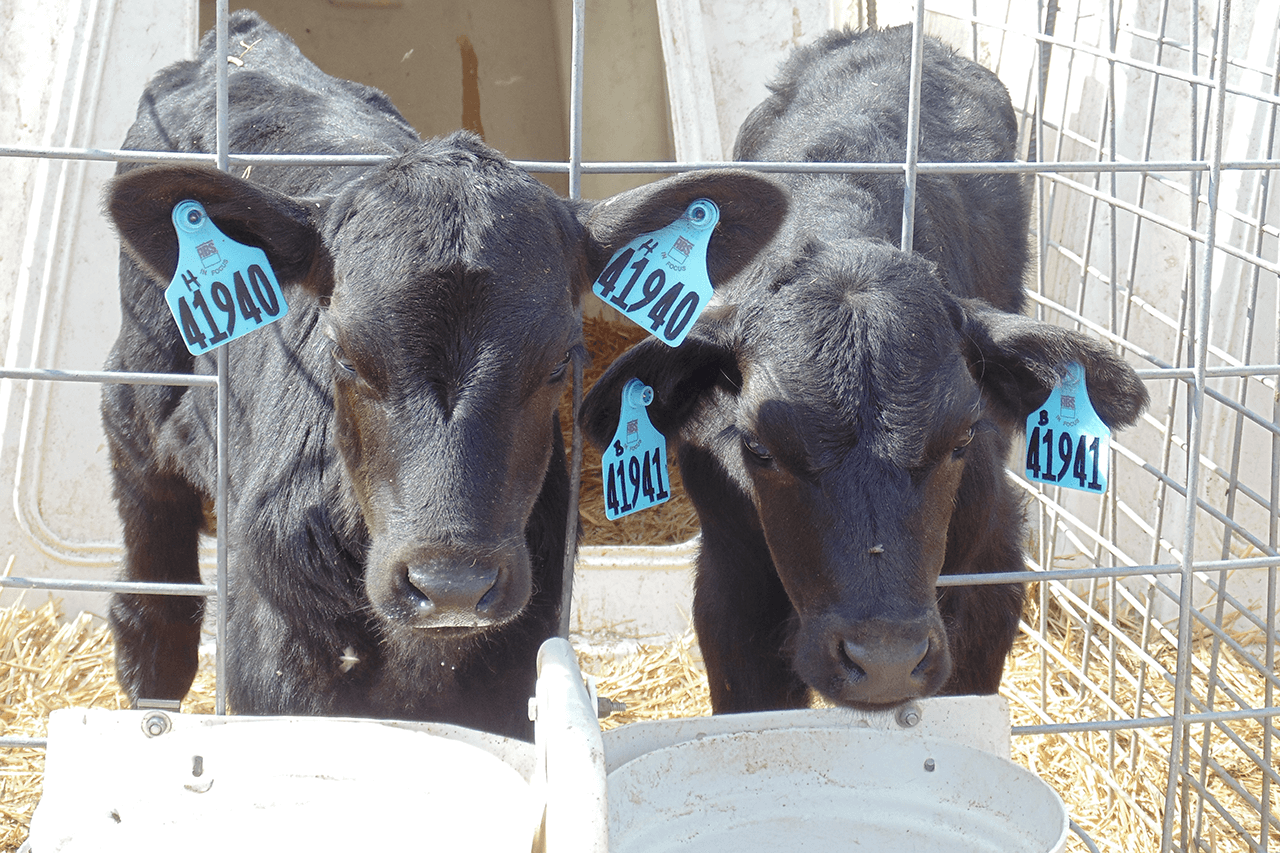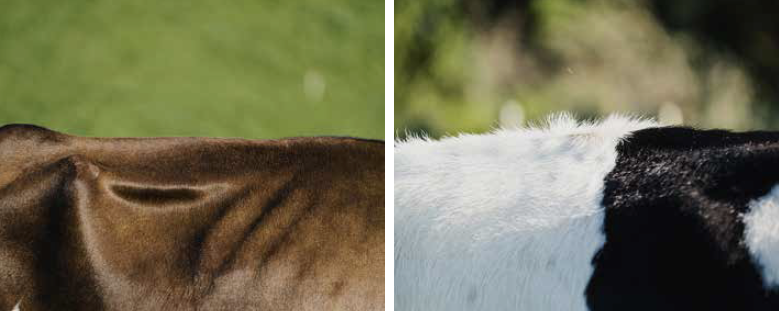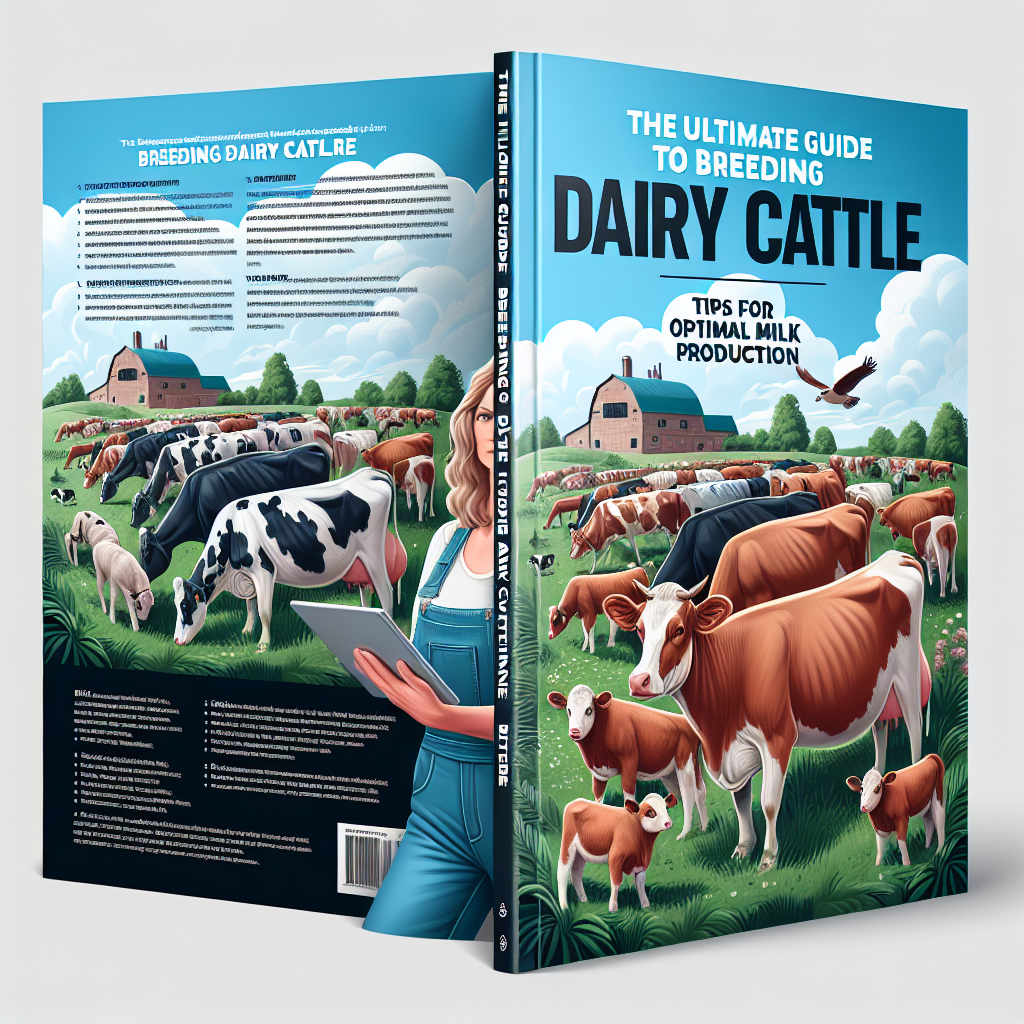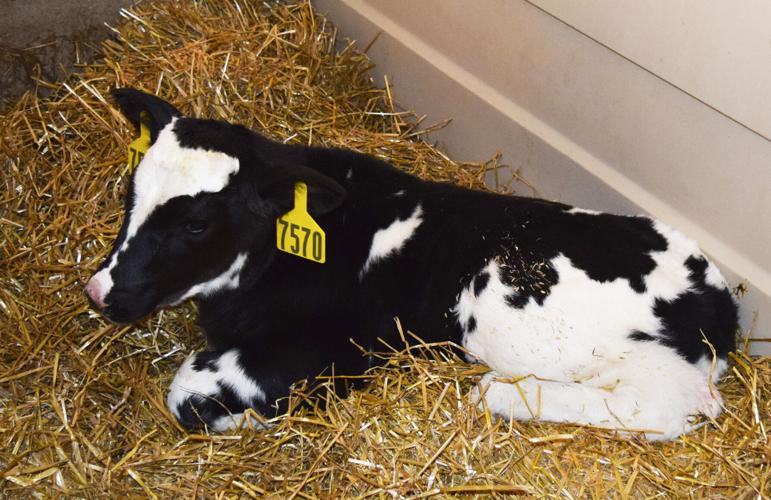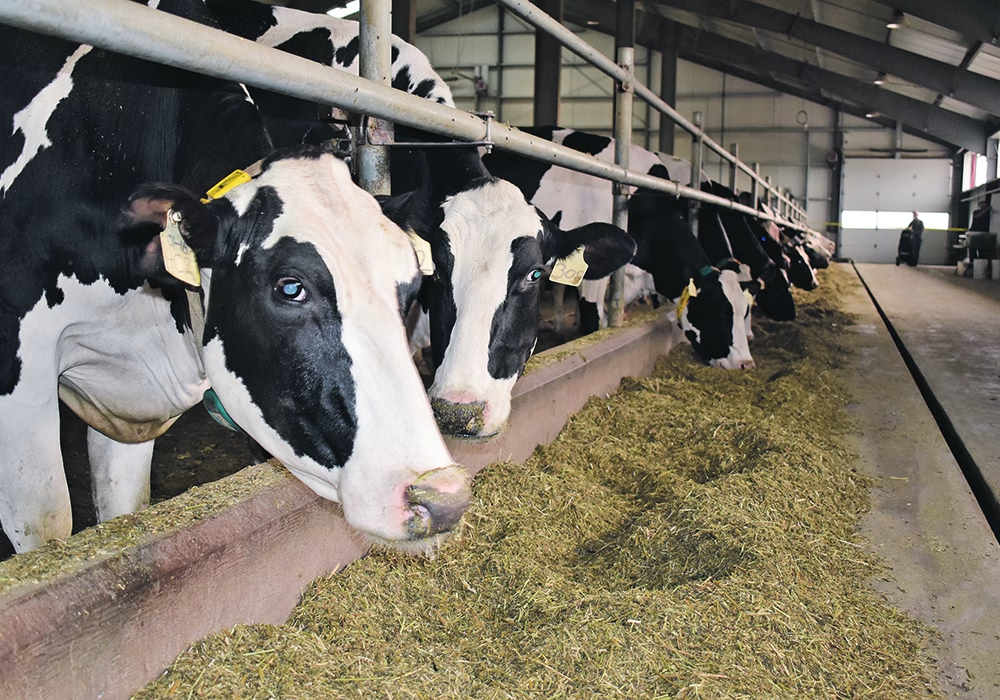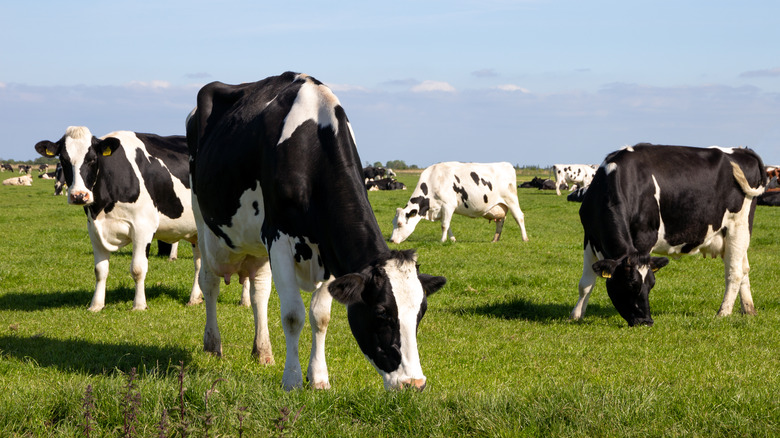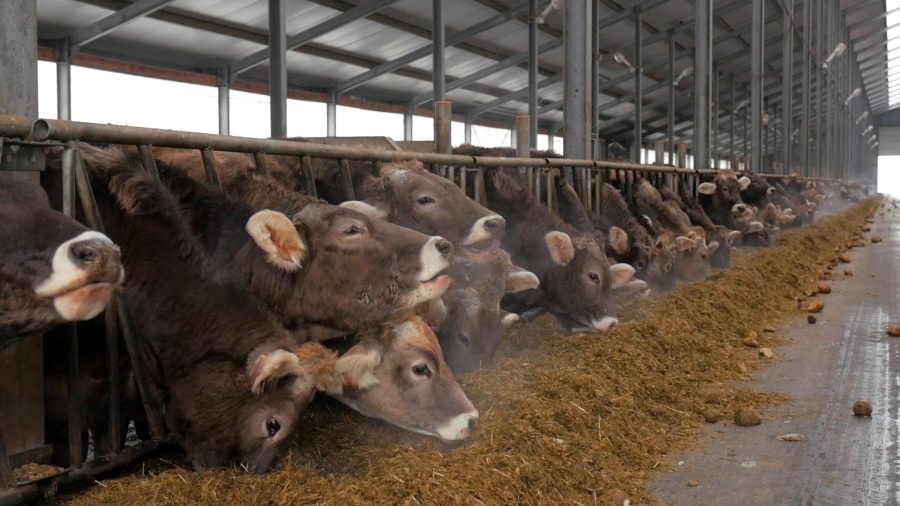Unveil the intriguing journey of artificial insemination. Who led the way in revolutionizing dairy farming? Discover the breakthroughs and advancements here.
Summary:
Artificial insemination isn’t just a scientific breakthrough; it’s a story that weaves through centuries of human curiosity, innovation, and determination. From the earliest anecdotal tales of Arabian tribes to researchers like Leeuwenhoek and Ivanow, A.I. reflects the quest to understand genetics. This rich history transcends borders, seeing key developments in countries like Russia, Japan, and the United States, each shaping today’s dairy industry. Pioneering efforts, lessons from nature, and relentless research have turned A.I. into an indispensable tool for modern dairy farming. It challenges us to think about A.I.’s future in agriculture. From historical observations and global innovations to modern implications, AI has enhanced genetic advancements and dairy production. AI has been vital to dairy farming, improving milk production through selective breeding traced back to ancient stories and early scientific achievements by Spallanzani, Heape, and Ivanow. Contributions from Japan, Denmark, and Italy in the 1930s further refined this technology.
Key Takeaways:
- Artificial insemination (AI) in animals represents a significant human innovation inspired by natural processes observed in insects.
- The foundational work of figures like Leeuwenhoek, Spallanzani, and Ivanow spearheaded the understanding and application of AI despite its gradual progression over the centuries.
- Global efforts in Russia, Japan, Denmark, and Italy played pivotal roles in advancing AI technology and influencing its spread and effectiveness.
- The development of semen storage methods, including yolk-based extenders and antibiotics, enabled A.I. to become a commercially viable option globally.
- Technological advancements, such as cryopreservation and improved semen packaging, significantly enhanced the logistics and storage of genetic material, paving the way for contemporary practices.
- A.I. democratized access to superior genetic traits in livestock, particularly dairy cows, transforming industry standards and capabilities in genetic selection.
- Evaluation methods for sperm quality evolved, focusing on motility, morphology, and volume, crucial for ensuring the successful dissemination of desirable traits.
- Sustainable practices in A.I. continue to evolve, balancing genetic advancements with environmental considerations in dairy farming.

Imagine the transformative power of a technology that has been quietly revolutionizing dairy farming for years. Artificial insemination (AI) is not just a scientific concept but a game-changer in the industry. It empowers you to select the best genes for your herd, leading to superior milk production and healthier calves. This isn’t a distant dream; it’s a reality shaping the present of dairy farming. AI is not just a tool; it’s a beacon of hope for the future of dairy farming.
From ancient breeders’ tales to the cutting-edge methods we employ today, AI has always been about pushing boundaries. It has fundamentally transformed the dairy industry, enhancing productivity and revolutionizing farming practices. The history of AI is not just a collection of old stories and experiments but a testament to human ingenuity and the relentless pursuit of progress that has shaped the dairy industry we know today.
The Natural Pioneers of Artificial Insemination: Lessons from the Hive
In nature, artificial insemination (AI) isn’t just a human invention; it’s a fundamental aspect of life, particularly in insects like bees. Bees employ AI when they gather nectar and pollinate plants. Their movement of pollen from one flower to another facilitates plant reproduction on a large scale, sustaining many plants and ecosystems. This seemingly simple process is similar to how humans use AI to breed animals.
How bees work with flowers reminds us of how we can learn from nature. While bees mix plant genetics naturally, humans use AI in farming to improve crops and animals. For dairy farmers, watching nature has helped us develop better breeding programs. Now, we can choose the best traits in livestock, which has dramatically improved farming today.
From Tribal Legends to Scientific Breakthroughs: The Evolution of Artificial Insemination
Diving into ancient stories, we find fascinating tales of early attempts at artificial insemination hidden in the stories of tribal rivalry. One repeated story tells of Arab horse breeders who would sneak into enemy camps—not to steal horses—but to gather the sperm of champion stallions. They used this sperm to inseminate their mares, hoping to breed strong winners from afar. While these stories might seem more like legends than facts, they show an early idea of selective breeding, a practice that would become scientific much later.
The transition of artificial insemination from myth to science marks a significant milestone in its history. This shift was not immediate but a result of years of study and discovery. By the 17th century, scientists like Leeuwenhoek began delving into the microscopic world, observing tiny ‘animalcules’ or sperm. These discoveries formed the basis for the scientific pursuit of AI, replacing myths with empirical research. This thirst for knowledge led to a scientific understanding of reproduction, paving the way for the methods used in the 19th and 20th centuries. As dreams turned into experiments, new pioneers emerged, ready to turn stories into reality. The rigorous research supplanted the mythical beginnings of AI, eager to harness this power to enhance agriculture.
Through the Lens of a Draper: The Unseen Genesis of Artificial Insemination
The journey into the artificial insemination of animals started not in scientific labs but with a curious Dutch cloth maker named Antonie van Leeuwenhoek. He was famous for making lenses that let scientists see tiny organisms for the first time. His discovery of “animalcules,” now known as sperm, was a huge step in understanding reproduction. Leeuwenhoek’s fantastic skill in making microscopes gave scientists the tools to explore life’s tiny details. This critical shift prepared the way for artificial insemination (AI) in animals.
Lazzaro Spallanzani, an Italian priest turned scientist, wasn’t satisfied with watching life’s building blocks; he wanted to work with them. In 1784, he successfully artificially inseminated a dog, putting theory into practice. His big experiment showed that sperm could be preserved and used later to inseminate a female dog. This was the first time anyone showed that humans could help sperm and eggs meet without natural mating.
As the timeline moves forward, so does our understanding. Walter Heape, a reproductive scientist from Britain, was a key figure in connecting early efforts with modern science. He did more than just experiments. He studied how animals breed in different seasons and how this relates to fertility. His work helped us understand how an animal’s environment affects its reproduction ability. This was not just academic knowledge; it helped shape modern reproductive management and AI methods.
The work of these early scientists forms a key trio that guided people through the challenges of understanding reproduction. Leeuwenhoek’s microscope gave the world a way to see reproduction at the cellular level. Spallanzani’s daring experiments showed that it could be applied in real life. Heape’s biological studies ensured that AI became a proven scientific method. The work of these pioneers has been vital in transforming AI from a scientific curiosity to a widely used tool in systematic breeding today.
Russia’s Revolutionary Compiler of Genetic Codes: Ivanow’s AI Transformation
In the late 1800s and early 1900s, Russia witnessed a significant transformation in animal breeding thanks to the innovative ideas of Ivanow. His contributions to artificial insemination (AI) were far-reaching, as he developed new animal breeding methods that propelled Russia to the forefront of AI advancements.
Ivanow invented semen extenders, which were essential for keeping sperm healthy on long trips. These extenders helped spread good genes over large areas, improving breeding programs and livestock quality.
Seeing the need for skilled workers, Ivanow started training programs. He taught technicians how to select the best stallions, ensuring that breeding animals were more substantial and improved. This allowed good traits to spread quickly.
Ivanow’s ideas reached beyond Russia. They inspired research worldwide and encouraged scientists like Japan’s Dr. Ishikawa to start similar projects. His work ignited interest and helped spread new reproductive biology technologies worldwide.
Ivanow’s legacy includes not only his technical skills but also his long-term impact on global agriculture. By improving semen preservation and training, he laid a solid foundation for artificial intelligence, which led to significant genetic improvements in animal reproduction and greatly influenced this science field for years.
The Era of Global Diffusion and Innovation: Japan, Denmark, and Italy Transform AI.
After the Russian breakthroughs in artificial insemination (AI), the world experienced new ideas and techniques. Japan, Denmark, and Italy made significant contributions. This period was about sharing knowledge and technology, which led to developments that forever changed the dairy industry.
Ivanow’s work inspired Dr. Ishikawa in Japan, where they began an AI program with horses in 1912. When he returned, he expanded AI to cattle, sheep, goats, swine, and poultry. Although language barriers kept this knowledge within Japan for a while, translations by Niwa and Nishikawa later opened these breakthroughs to the rest of the world.
Denmark was an early leader in dairy farming. Eduard Sorensen and Gylling-Holm from the Royal Veterinary College started the first cooperative dairy AI group 1936. Their efforts showed that AI worked slightly better, with a 59% success rate in cows, than natural breeding. This success helped spread AI to the United States and other Western countries.
In Denmark, the rectovaginal fixation technique was a significant innovation. It allowed accurate placement of semen deep in the cervix or uterus, making sperm usage more efficient. Danish innovation also led to the creation of semen straws. Originally made from oat straws, these were updated to cellophane straws after a clever idea from a birthday party observation. Cassou later commercialized them, influencing AI worldwide.
In Italy, progress in AI was driven by Amantea and Bonadonna. They developed an artificial vagina for dogs and promoted research across different species. These efforts resulted in international cooperation, highlighted by the first International Congress on AI and Animal Reproduction in Milan in 1948. This event unified scientific goals and established AI essential for agricultural and veterinary advancement.
The combination of ideas from various countries and old and new methods paved the way for today’s AI practices. Each nation contributed unique ideas and technologies, setting a course for improved efficiency and genetics in dairy farming.
America’s AI Revolution: A Decade of Innovation and Industry Transformation
The 1940s in America were crucial for artificial insemination (AI). AI wasn’t just about using new technology; it was about transforming the dairy industry and setting new standards for breeding worldwide. Farmers who were used to traditional methods suddenly found themselves in a new world where science played a significant role in farming.
This change started with AI cooperatives, which were like a movement led by people who saw the potential of AI to transform dairy farming. 1938, the first AI cooperative began in New Jersey, inspired by Denmark’s success. Soon after, another cooperative started in New York, paving the way for a network that spread nationwide.
These cooperatives were more than just organizations; they were partnerships between farmers and researchers. They allowed farmers to work directly with experts like Cornell University to boost productivity. This teamwork involved large-scale testing of insemination techniques, focusing on choosing the correct sires and refining semen handling to increase fertility.
Such efforts led to significant improvements in evaluating semen quality. They standardized the assessment of sperm health and movement, which was crucial for ensuring that AI worked effectively in the market.
The cooperative model was also great for spreading access to top genetics. Farmers of all financial backgrounds could use the best breeding animals. This approach quickly improved the quality of milk production across many herds, showing AI’s power to level the agricultural playing field.
So, the 1940s were more than just a time of change; they showed how science and teamwork could update old farming methods into modern successes. AI in America became a symbol of progress in farming and demonstrated the impact of innovative partnerships in transforming an entire industry.
The Magnifying Glass: Evaluating the Silent Architects of Genetic Progress
Checking semen quality is essential for artificial insemination, especially in the dairy industry. To understand semen quality, you must see how many sperm move correctly. This needs precise tools, like a good microscope, to look closely. The main things checked are sperm movement, concentration, and volume, all crucial for successful insemination.
Frozen semen complicates things. It’s essential to check how well sperm survive after being thawed. During semen checking, measuring the ejaculate volume and sperm concentration is key. Accuracy is crucial. Initially, people used graduated containers, but now, weight is often used for more detailed results.
Moving forward, the invention of semen extenders marked tremendous progress in AI technology. At first, the challenge was keeping semen good long enough for shipping and use in different places. This led to yolk-phosphate extenders, and Salisbury and others improved them with sodium citrate to keep the egg yolk stable. These improvements kept semen valid for up to three days at 5°C, making it useful worldwide in cattle breeding.
Later, adding glycerol for freezing changed AI a lot, making long-term semen storage possible. As specific bull semen became more in demand, finding ways to make each ejaculate go further was essential. Lowering the sperm needed per insemination to 4 million per dose changed things significantly. Moving from calling it “dilution” to “extension” better described the process, showing it improved rather than lessened semen’s value.
These developments, especially using egg yolk-based extenders, significantly increased the practicality and efficiency of AI, setting new industry standards. The many doses each bull could provide, together with better sperm survival over distances and time, led to a new era of genetic improvement in dairy cattle. This wasn’t just a technical success but key for advancing breeding programs and boosting dairy production efficiency.
From Frosty Beginnings: Cryopreservation’s Cold War on Dairy Genetics
The discovery of semen freezing is a big deal for the dairy industry. It changed breeding methods and helped improve cattle genetics like never before. Scientists found a way to freeze chicken sperm using glycerol, a protective chemical, and soon used the same technique for bull sperm. This shielded the sperm during freezing.
This new method allowed sperm to be stored for a long time at -196°C, as frozen sperm stays stable. It also allowed breeders to send cattle genetics over long distances and organize breeding programs using the best bull genes without worrying about the sperm’s shelf life.
But getting here wasn’t easy. Frozen sperm was first stored in glass tubes that often broke. Innovators like Cassou made stronger and easier-to-use plastic straws instead. They also created a unique tool for using these straws in breeding, making it practical for farmers.
Another big step was switching from solid carbon dioxide to liquid nitrogen. This kept the temperature low enough to keep sperm healthy for a long time. At first, liquid nitrogen tanks needed constant refills, which was a hassle. Thanks to investments from people like J. Rockefeller Prentice, companies improved these tanks, making them more efficient.
Cryopreservation, or freezing sperm, has dramatically changed the dairy industry. Large farms can now plan and improve their herds’ genetics to increase productivity and profits. This process starts with the precise art and science of storing and managing sperm.
Genetic Alchemy: How AI Empowered Dairy Farmers to Rewrite the Blueprint of Milk Production
The shift brought by artificial insemination (AI) changed how dairy farmers pick the best bulls, making it possible for all farmers to obtain top-quality genetics. Before AI, only the wealthy could afford the best bulls. With AI, everyone could access these, leveling the playing field.
As AI grew, scientists developed better ways to choose bulls based on their genetic potential. Genomic selection became vital, using DNA markers to predict a young bull’s value before it had offspring, which sped up breeding and genetic improvements.
Progeny testing was once the best way to judge bulls, assessing them based on their daughters’ performance. But this was slow. As AI progressed, new methods gave more precise tests for a bull’s worth in areas beyond milk production, like fertility and health. This helped farmers better select traits to boost herd productivity and resilience.
In short, AI improved dairy genetics, giving farmers control over their herds’ future and setting the stage for today’s advanced dairy farming, which is based on high-producing cattle.
Navigating the AI Odyssey: Balancing Genetics, Sustainability, and Technology in Modern Dairy Farming
As we look forward to new technology in the dairy industry, artificial insemination (AI) remains a crucial tool. It helps farmers improve the genetic quality of their herds and increase productivity. However, the journey is not complete. Today’s AI landscape is complex and brings new challenges that we must address creatively.
Combining AI with genetics has recently opened up tremendous possibilities in selective breeding. This combination allows farmers to choose traits like disease resistance and milk production accurately. But there are challenges. Relying on the same top genetic lines worldwide could lead to less genetic diversity, making herds vulnerable to new issues.
Environmental sustainability is also essential in modern dairy farming. As consumers want more eco-friendly farming, AI must help sustainable agriculture grow. AI can decrease the environmental impact by improving how animals convert feed and reducing methane emissions from milk production. However, achieving these goals requires research, policy support, and investment in farmer education.
Automation and digital tools could significantly improve AI in dairy farming. Precision farming, using sensors and data, can improve timing and efficiency in insemination. AI programs could provide real-time insights into cow health to reduce mistakes and improve breeding. However, challenges exist, like high costs, the need for technical skills, and concerns about data privacy.
Ultimately, the future of AI in dairy farming is full of opportunities and responsibilities. As we move forward, it’s crucial to balance technology with preserving genetic diversity and to stay committed to sustainability and ethical practices. Dairy industry leaders have the power to create a future where innovation aligns with environmental health and productivity thrives.
The Bottom Line
The journey from old myths to modern farming shows our endless curiosity and drive to improve. From watching nature to inventing new science, this history highlights our effort to understand and control life. The development of artificial insemination (AI) has changed farming, especially in improving genetics and crops.
But as we move forward, we must ask: How far can we go—or should we go—with these technologies? While they bring bigger crops and more money, we must consider what’s right and good for the planet. Can we handle controlling life better than understanding its effects? For today’s dairy farmers and farming experts, this isn’t just about getting the most milk and efficiency. It’s also a conversation about old ways, science, and ensuring we have food for the future.
Learn more:
- Dairy Farming 2.0: Harnessing AI for Efficiency, Health, and Future Sustainability
- The 50-Year Journey of ET and IVF: Indelible Footprints on the Landscape of Global Livestock Breeding
- The Power of AI: Revolutionizing Dairy Industry with Smart Cows and Farms
 Join the Revolution!
Join the Revolution!
Bullvine Daily is your essential e-zine for staying ahead in the dairy industry. With over 30,000 subscribers, we bring you the week’s top news, helping you manage tasks efficiently. Stay informed about milk production, tech adoption, and more, so you can concentrate on your dairy operations.







 Join the Revolution!
Join the Revolution!